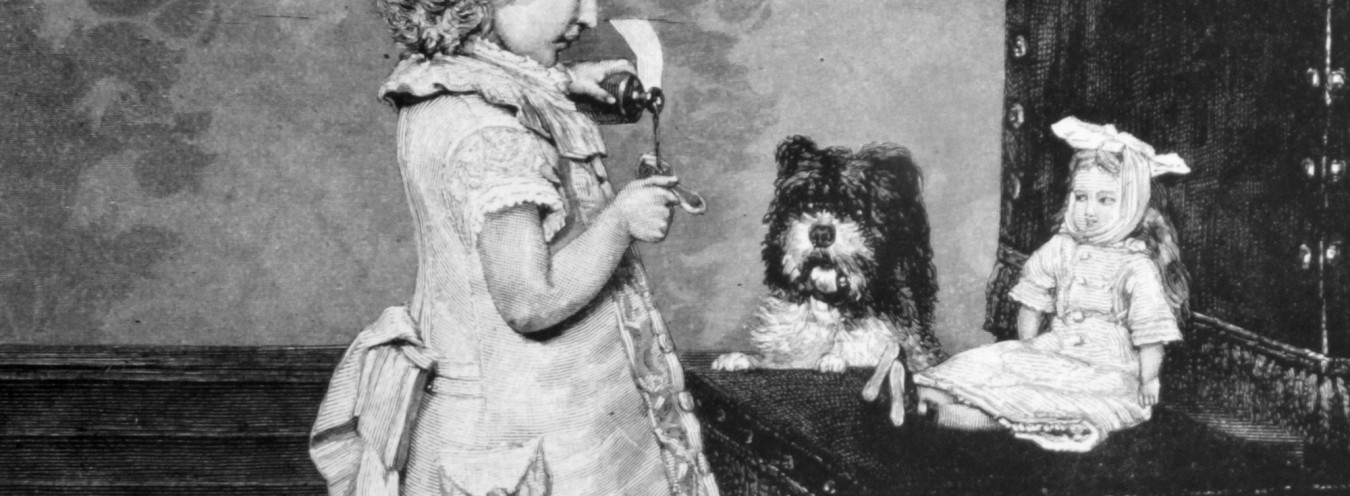
Toys
In the left-hand window, which contained displays of neck-ties, gloves, galoshes and perfumes, toys, mostly mechanical, occupied the central position. (10)
Toys are part of the range of goods offered in Wokulski’s store. Placed just next to leatherware in the centre of the left display window, they catch the eyes of potential customers. Rzecki has a habit of replacing one attractive toy with another, equally interesting one; for example, he puts out a carousel once the passers-by get used to a fountain.
There were no toy manufacturers in Warsaw. Wokulski and other tradesmen had to import costly toys produced by renowned foreign companies, mainly from Copenhagen, Paris, and Nuremberg. Wooden toys could be commissioned at Polish craft workshops in the south of the former Polish territories (in the areas of Kielce, Kraków, and Żywiec).
Toys remind Ignacy Rzecki of his happy childhood, when he watched the curious toys displayed in Mincel’s shop window: a jumping Cossack, a drum, a sabre and a wooden horse with a real tail. Already as a senior clerk, after the shop closes, Rzecki often arranges all the various dolls, figures of animals, acrobats and soldiers on the counter, and then he winds up the mechanical and sound-making ones: circus clowns riding a horse, couples waltzing to the accompaniment of music, a train full of passengers, a cat chasing a mouse, a bear scrambling up and down a pole. Then, Rzecki’s imagination pictures a magical fairy-tale world, and he is laughing and talking to the toys like a gleeful child. Sometimes, however, Rzecki is overcome with melancholy. The moving and sound-making figures seem to him to be like real-life people, who lack spontaneity, play out their life roles mechanically, and when they are no longer needed – get discarded like unwanted toys: The springs will run down and you’ll end up back in your boxes again… It’s vanity, all vanity!
There were two general types of toys: for children (dolls, doll prams, soldiers, and other figures, etc.) and for adults, which moved around and made sounds (e.g. carousels, cigarette cases, dancing couples). They were aimed at many different target groups and had functions. Folk toys (rattles, animal figures, and prams) were made of wood, wicker, wax, clay, paper or fabric; they were based on folkloric styles and patterns of a given region, and played with by children from the countryside or poor families. Souvenirs (music boxes and albums, dolls) were mostly made of porcelain, galvanised metal or papier mâché, and had a sentimental value. Christian toys (saint figurines, crèches, miniature churches, and altars) enabled children to enact religious rituals and were also used as decorations at Christmas and other Christian holidays.
The quality and quantity of toys possessed by individual children depended on the financial standing of their parents. Poor families usually made playthings on their own out of easily available material and everyday items, while wealthy families bought their children expensive toys suited to their age and sex. While playing, little girls imitated their mothers and were introduced to the world of adult responsibilities with the help of dolls, fully-equipped doll houses, faience set miniatures, prams, cribs, knitting sets. The box of toys that Rzecki sends to Helena Stawska’s daughter contains a forest with animals, a set of dolls’ furniture, a little tea-set and a brass samovar.
Toys for little boys, in turn, were aimed at preparing them for their future occupations and traditionally masculine activities. They encompassed lead soldiers, trumpets, and drums; miniature cars, ships, and trains; toy rifles and sabres. Children of both sexes could share rocking horses, toy chaises, and animal enclosures, playing blocks, colouring books, paper-cuts, and jigsaws.
→ The Doll
Bibliografia
- T. Lewińska, Kolorowy świat zabawek: zabawki ludowe w Polsce, Kielce 1995.



